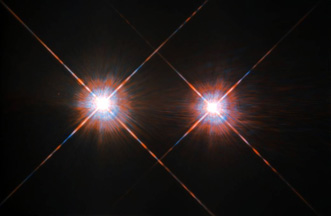“One of the main features that distinguishes this planet from Earth is that
the light from its star is mostly in the near infra-red. These frequencies of light interact much more strongly with water vapour and carbon dioxide in the atmosphere, which affects the climate that emerges in our model [of Proxima Centauri and exoplanet.]”
- James Manners, Ph.D., Astronomy & Astrophysics Journal, May 16, 2017

Click here to subscribe and get instant access to read this report.
Click here to check your existing subscription status.
Existing members, login below:
© 1998 - 2024 by Linda Moulton Howe.
All Rights Reserved.

